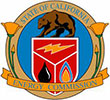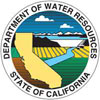All data sets can be made available to interested researchers upon request. Please contact amir.a@uci.edu
Global Multivariate Standardized Drought Index, MSDI, (1980-present)
This data set include monthly Multivariate Standardized Drought Index (MSDI) obtained using the NASA Modern Era Retrospective-Analysis for Research and Applications (MERRA) soil moisture and precipitation data. MSDI combines both precipitation and soil moisture and provides a composite model for drought analysis. The data set is available at different time scales (e.g., 1-month, 6-month). Spatial resolution: 1/2 degrees latitude x 2/3 degrees longitude.
NLDAS-Based Multivariate Standardized Drought Index, MSDI, (1980-present)
This data set include monthly Multivariate Standardized Drought Index (MSDI) obtained using the NASA North American Land Data Assimilation System (NLDAS) soil moisture and precipitation data. MSDI combines both precipitation and soil moisture and provides a composite model for drought analysis. The data set is available at different time scales (e.g., 1-month, 6-month). Spatial resolution: 1/8th-degree grid.
Global Standardized Soil Moisture Index, SSI, (1980-present)
This data set include monthly Standardized Soil Moisture Index (SSI) obtained using the NASA Modern Era Retrospective-Analysis for Research and Applications (MERRA) soil moisture data. The data set can be used to study global agricultural droughts, hydrology and ecosystem impact studies. The data set is available at different time scales (e.g., 1-month, 6-month). Spatial resolution: 1/2 degrees latitude x 2/3 degrees longitude.
NLDAS-Based Standardized Soil Moisture Index, SSI, (1980-present)
This data set include monthly Standardized Soil Moisture Index (SSI) obtained using the NASA North American Land Data Assimilation System (NLDAS) soil moisture data. The data set can be used to study global agricultural droughts, hydrology and ecosystem impact studies. The data set is available at different time scales (e.g., 1-month, 6-month). Spatial resolution: 1/8th-degree grid.
Global Standardized Precipitation Index, SPI, (1980-present)
This data set include Standardized Precipitation Index (SPI) obtained using the NASA Modern Era Retrospective-Analysis for Research and Applications (MERRA) precipitation data. The data set can be used to study global meteorological droughts, hydrology and ecosystem impact studies. The data set is available at different time scales (e.g., 1-month, 6-month). Spatial resolution: 1/2 degrees latitude x 2/3 degrees longitude.
NLDAS-Based Standardized Precipitation Index, SPI, (1980-present)
This data set include monthly Standardized Precipitation Index (SPI) obtained using the NASA North American Land Data Assimilation System (NLDAS) Precipitation data. The data set can be used to study global agricultural droughts, hydrology and ecosystem impact studies. The data set is available at different time scales (e.g., 1-month, 6-month). Spatial resolution: 1/8th-degree grid.
A Satellite-Based Global Drought Climate Data Record (1979-present)
High resolution satellite measurements provide valuable precipitation information on a quasi-global scale. However, their short lengths of records limit their applications in drought monitoring. In addition to this limitation, long-term low resolution satellite-based gauge-adjusted data sets such as the Global Precipitation Climatology Project (GPCP) one are not available in near real-time form for timely drought monitoring. A satellite-based drought climate data record is provided that bridges the above gap between low resolution long-term satellite gauge-adjusted data and the high resolution near real-time satellite precipitation data sets to create a long-term climate data record of droughts. To accomplish this, a Bayesian correction algorithm is used to combine GPCP data with real-time satellite precipitation data sets for drought monitoring and analysis. This data set includes a data-driven satellite-based Standardized Precipitation Index (SPI) that can be used for drought monitoring especially over remote and/or ungauged regions. The presented satellite-based data sets provide the opportunity to investigate changes in patterns and severity of droughts over the past three decades. The data set is available at 2.5 and 0.5 degree resolutions.
Reference Publication:
AghaKouchak A., and Nakhjiri N., 2012, A Near Real-Time Satellite-Based Global Drought Climate Data Record, Environmental Research Letters, 7(4), 044037, doi:10.1088/1748-9326/7/4/044037.
Sponsors








